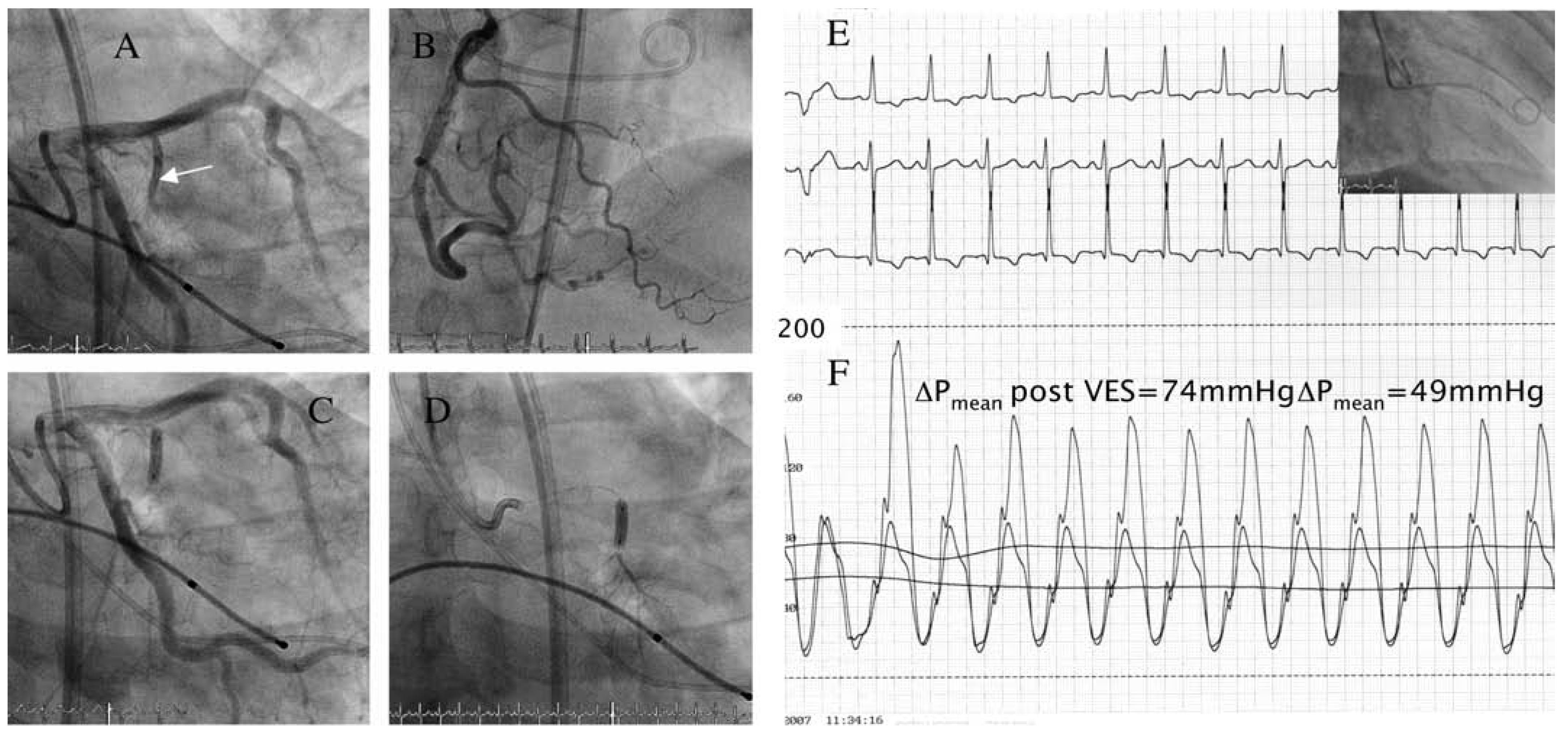Transcoronary Ablation of Septal Hypertrophy in HOCM: Septal Collaterals May Cause Unwanted Inferior Myocardial Infarction
Case report
References
- Chowdhary, S.; Galiwango, P.; Woo, A.; Schwartz, L. Inferior infarction following alcohol septal ablation: A consequence of collateral damage? Catheter Cardiovasc Interv. 2007, 69, 236–42. [Google Scholar] [CrossRef] [PubMed]
- Wustmann, K.; Zbinden, S.; Windecker, S.; Meier, B.; Seiler, C. Is there functional collateral flow during vascular occlusion in angiographically normal coronary arteries? Circulation. 2003, 107, 2213–20. [Google Scholar] [CrossRef] [PubMed]


© 2007 by the authors. Attribution - Non-Commercial - NoDerivatives 4.0.
Share and Cite
Wani, S.; Seiler, C. Transcoronary Ablation of Septal Hypertrophy in HOCM: Septal Collaterals May Cause Unwanted Inferior Myocardial Infarction. Cardiovasc. Med. 2007, 10, 401. https://doi.org/10.4414/cvm.2007.01286
Wani S, Seiler C. Transcoronary Ablation of Septal Hypertrophy in HOCM: Septal Collaterals May Cause Unwanted Inferior Myocardial Infarction. Cardiovascular Medicine. 2007; 10(12):401. https://doi.org/10.4414/cvm.2007.01286
Chicago/Turabian StyleWani, Sunil, and Christian Seiler. 2007. "Transcoronary Ablation of Septal Hypertrophy in HOCM: Septal Collaterals May Cause Unwanted Inferior Myocardial Infarction" Cardiovascular Medicine 10, no. 12: 401. https://doi.org/10.4414/cvm.2007.01286
APA StyleWani, S., & Seiler, C. (2007). Transcoronary Ablation of Septal Hypertrophy in HOCM: Septal Collaterals May Cause Unwanted Inferior Myocardial Infarction. Cardiovascular Medicine, 10(12), 401. https://doi.org/10.4414/cvm.2007.01286



